When Disaster Strikes
Experiencing a flooded house is more than just a nightmare—it’s an overwhelming, emotional ordeal that can leave you feeling lost and unsure of what to do next. Whether it’s caused by a natural disaster or an unexpected plumbing failure, the reality hits hard. In moments like these, knowing how to act quickly and make smart decisions about what to keep and what to let go can make all the difference in minimizing damage and keeping your family safe.
In this guide, we’ll walk alongside you through the steps to take right after a flood, show you how to assess what can be saved, and give advice on what needs to be discarded. We’ll also offer practical tips for restoring your home and preventing future issues. Together, we’ll help you navigate this tough situation with clarity and confidence.
Immediate Action Steps
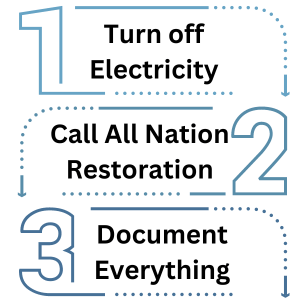
When faced with a flooded house, taking swift action is crucial. Here’s a brief list of what you should do within the first 24 hours:
- Ensure Safety First: Turn off electricity at the main breaker and avoid contact with floodwaters, which can be hazardous.
- Contact Professionals: Call in experts for damage assessment and to start the drying process.
- Document Everything: Take photos and videos for insurance claims.
For a detailed breakdown of these steps, consider reading our related articles:
- How To Handle Flood Damage in Your Austin Commercial Building
- A Quick Guide: Immediate Steps to Take When Your Bathroom Floods
- Essential Steps to Dry Out After A Kitchen Flood
What to Save From Your Flooded House
When facing the overwhelming task of sorting through your belongings in your flooded house, it’s natural to feel unsure about what can be saved and what’s beyond recovery. In the midst of this chaos, it’s comforting to know that not everything is lost. Many items, from important documents to sentimental keepsakes, can often be salvaged with the right techniques and a little patience. Let’s take a closer look at what you can save and how to go about it, so you can hold onto what matters most.
What to Save: Important Documents
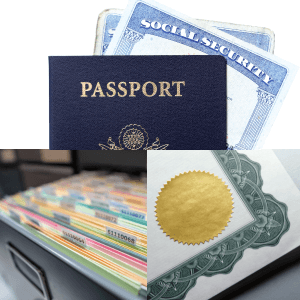
Even if your essential documents, like birth certificates, passports, and insurance papers, are soaked, they can often be salvaged with care:
- Immediate Action: Gently blot excess water using soft, absorbent materials like paper towels.
- Air Drying: Spread documents out in a well-ventilated area to dry. If possible, place them in front of a fan.
- Freezing Option: For important papers that require more time for restoration, consider freezing them. This prevents further damage and buys you time until professional help is available.
- Professional Help: For highly valuable or irreplaceable papers, contact a document restoration service.
What to Save: Photographs and Family Keepsakes
Photos and heirlooms often carry immense sentimental value. Though fragile, many of these items can be restored with the right approach:
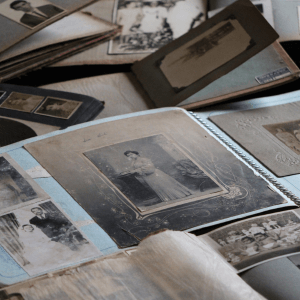
- Rinse Gently: If photos are covered in debris or dirty floodwaters, rinse them in clean water before laying them flat to dry.
- Separate Carefully: For photographs, avoid separating them if they are stuck together when wet. Dry them out and then gently peel them apart.
- Expert Restoration: For family keepsakes, especially fabric-based or leather-bound items, consult a conservator to preserve their quality.
Read more from FEMA: Salvaging Water-Damaged Family Valuables and Heirlooms
What to Save: Furniture and Upholstery
Some furniture may be salvageable if the damage is limited:

- Solid Wood Furniture: If the wood hasn’t warped, it can often be dried out and refinished. Keep an eye on any signs of swelling or splitting.
- Upholstery Consideration: For upholstered furniture, it’s often a case-by-case basis. Furniture with minor dampness may be dried with industrial fans and dehumidifiers, but if the water was contaminated, discard it.
- Cleaning Tips: Use mild cleaners and disinfectants to prevent mold on wood surfaces. Upholstered items should be professionally cleaned if salvageable.
What to Save: Electronics
While it may seem like electronics are instantly ruined, they can sometimes be saved with quick action:
- Don’t Power On: Avoid turning on any devices that have been submerged.
- Disassembly: If possible, remove batteries, SIM cards, and other detachable parts.
- Drying Techniques: Leave electronics in a dry, warm place, or consider using silica gel packs to absorb moisture. Consult with an expert about further recovery steps.
- Professional Restoration: Contact professionals specializing in electronics restoration for valuable or critical devices like computers and entertainment systems.
What to Toss From Your Flooded House
As hard as it is to let go of certain belongings, some items simply can’t be saved after a flooded house. Keeping them around can pose serious health risks, from mold to harmful bacteria. Understanding what needs to be tossed can help you protect your home and family in the long run. While parting with damaged items is tough, it’s a crucial step in ensuring a safe and healthy recovery. Let’s walk through the things that should be discarded, so you can start fresh with peace of mind.
What to Toss: Mattresses and Upholstered Furniture
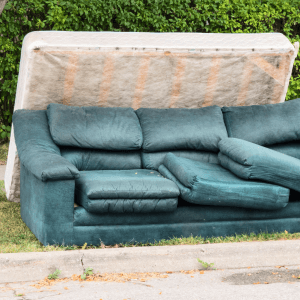
Even with the best cleaning, mattresses and most upholstered furniture often become breeding grounds for mold and bacteria:
- Why Toss It: Mattresses and couches absorb floodwaters, and thorough drying is rarely enough to remove all contaminants. The risk of mold and bacteria outweighs the cost of replacement.
- Risks: Moisture and organic materials create the perfect environment for microbial growth, which can be harmful to your health.
What to Toss: Carpeting and Rugs
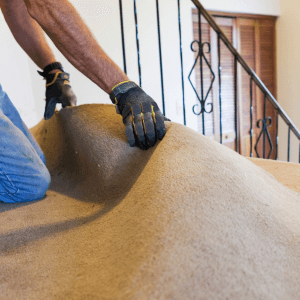
Water-soaked carpets and rugs often need to be discarded, especially if submerged for long periods or exposed to contaminated water:
- Contaminated Water: Carpets that have come into contact with sewage, chemicals, or other contaminants should be discarded immediately.
- Sanitation Issues: Even if floodwaters are clean, water may soak into the carpet padding, making it nearly impossible to sanitize.
What to Toss: Insulation and Drywall
When insulation and drywall are affected by floodwaters, they’re typically beyond saving:
- Porous Materials: Insulation soaks up water, and drywall tends to swell, crack, or grow mold after exposure.
- Health Hazards: Once compromised, these materials can harbor mold, mildew, and dangerous pathogens. Replacing them prevents long-term structural damage and health risks.
What to Toss: Food and Drink
Any food or drink that has been exposed to floodwaters in a flooded house, even if it appears to be sealed, should be thrown away:
- Why Toss It: Water contamination may have compromised the packaging. Floodwater can contain bacteria, viruses, and harmful chemicals.
- Types of Food: Perishables, boxed foods, and even canned goods that were submerged should all be discarded. It’s safer to restock than risk foodborne illnesses.
What to Toss: Clothing and Textiles
In most cases, clothing that has been exposed to contaminated floodwaters may need to be discarded unless it can be thoroughly cleaned:
- Salvaging Tips: If the water was clean, items can be sanitized by washing them in hot water and drying them on the highest heat setting. However, textiles soaked in contaminated or stagnant water should be discarded.
- Exceptions: Special fabrics such as leather or vintage clothing may require professional restoration.
Additional Tips for Safe Disposal
- Waste Disposal: Contact your local waste management services for guidelines on disposing of flood-damaged items, as some materials may require special handling.
- Health Precautions: Always wear protective gloves and a mask when handling water-damaged materials to avoid direct contact with harmful bacteria or mold spores.
Read more: 10 Tips for Flood Clean Up at Home
Conclusion
Dealing with a flooded house is daunting, but knowing what to save and what to toss can significantly mitigate damage. Prioritize safety, act quickly, and rely on professionals when needed. By being prepared and informed, you can protect your home and family from future disasters.
For expert assistance, trust All Nation Restoration. With over 12 years of experience in damage restoration, we are ready to help you recover swiftly and safely. Our certified technicians and top-tier customer service ensure that your home returns to normal as quickly as possible. Contact us today for a free consultation and join countless satisfied homeowners who have turned disaster into recovery success stories.







